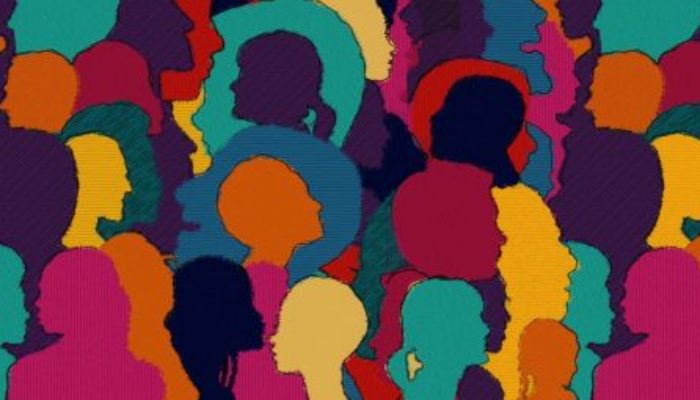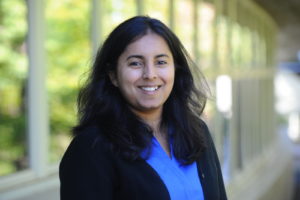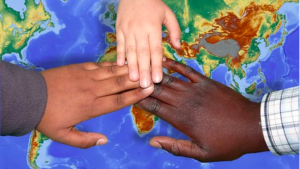
Despite many efforts around Diversity, Equity, and Inclusion (DEI) in Science,Technology, Engineering, and Mathematics (STEM), a noticeable disparity in geosciences still exists. To understand the root cause and steps we can take forward, it was my privilege to talk with Dr Kuheli Dutt, Assistant Dean for DEI at the Massachusetts Institute of Technology (MIT). Before MIT, Dr Dutt was an Assistant Director of Academic Affairs and Diversity at Lamont-Doherty Earth Observatory, Columbia University. Dr Dutt has published numerous research articles on diversity issues in STEM. Her recent Nature Geoscience paper “Race and racism in geosciences” was the most accessed paper of 2020 with more than 66000 views. Dr Dutt has been featured by many media houses, including New York Times, Fortune, Science, Nature and more, for her extensive work in DEI.

Dr. Kuheli Dutt, Assistant Dean DEI, MIT
Hi Dr Dutt, it’s my pleasure to interview you for the EGU_NH blog. Can you tell me what has motivated you to become vocal about the issues of racism in Science, Technology, Engineering, and Mathematics (STEM), especially geosciences? Was there any incident that navigated your path?
Race/ethnicity is an incredibly delicate and sensitive subject. I used to initially talk about these internally within the Lamont community. I would say that the incident that prompted us to speak out publicly was when our graduate students were attacked with hateful emails with offensive racial content, from an anonymous sender, in the summer of 2019. While our community at large condemned those emails (as everyone rightly should), the differences in people’s reactions were eye-opening to me. Some people took this as a call to action to open up campus-wide conversations about race and inclusion. Others just acknowledged it as an unfortunate incident that had nothing to do with them personally and that such incidents should just be ignored, so they did not see the need to participate in any dialogues or events around racial bias and awareness. Keep in mind that geosciences are a predominantly “White” discipline. Seeing this attitude, this lack of ownership, bothered me deeply, especially as I saw the pain that this incident caused our students of colour. I decided to speak up publicly on the subject via a publication in a prominent venue such as Nature Geoscience. All this was well before George Floyd and other murders, so this was not on people’s radars in the way it is now. Also very telling was that despite searching through every possible geoscience journal I could get my hands on, I did not see any articles specifically addressing the topic of racism. So that strengthened my resolve even further to speak out publicly on the topic.
2. Can you share some of the challenges you have faced addressing Diversity, Equity and Inclusion?
There have been several! I started doing this work 15 years ago, long before these topics were on everyone’s radars as they are today. Back then, it was quite uncommon to have a designated institutional DEI Officer (which now seems standard). And then, there was the issue of my identity as a woman of colour working in a predominantly White and male space. Most of the challenges have been around mindsets and culture. For example, many people have this erroneous perception of a trade-off between diversity and excellence; if we are being inclusive, somehow, we are compromising on merit. “The reality is that talented people come from all backgrounds, and what we refer to as “merit” is often really the outcome of having access to resources and opportunities”. Another belief, usually held by majority groups, is that if there aren’t many women, people of colour, and LGBTQ+ people in these fields, they may not be interested in those fields. The research shows that underrepresented groups face more hurdles, challenges and biases than majority groups and are more likely to leave these fields. So mindsets and cultures need to change before we can truly advance in promoting DEI.
3. Sometimes, while talking about DEI and particularly difficult topics like race, sexism in geosciences and entitlements, one of the main apprehensions is not to cause more harm than good. What is your approach/narrative when dealing with these topics?
These are sensitive and challenging topics for sure, especially as our perspectives on these topics are usually shaped by our own life experiences. Even words like “privilege” and “entitlement” are loaded and mean different things to different people. So, there is a huge element of subjectivity in how we view these issues. My approach is to adopt a non-judgmental stance, especially towards people who are relatively new to these conversations and are still learning. I make it a point to narrate the mistakes that I’ve made in the past so that people know that it is acceptable to make mistakes as long as there is a genuine commitment to learning; being an ally in whatever way possible is the most important thing. There is also a generational component here, as some older people might not be as familiar with these concepts. At the same time, I encourage people to push themselves outside of their comfort zones rather than simply stay in their own bubbles. And one point that I cannot stress enough is that this is not about being a good or bad person but about acknowledging and addressing that different groups/people have very different realities. That systemic biases, rather than being a good or bad person individually, need to be addressed.

Figure 1. “Diversity and inclusion cannot exist without a sense of belonging”, words from Dr Dutt’s recent Nature Geoscience article. (Image distributed via pixabay.com)
4. Coming to your 2019 Nature research article “Race and racism in geosciences”, the topic of racism versus prejudice is so significant but less recognized. What is the difference, and how is it perceived differently? Can you discuss that a little bit?
This ties in directly with what I said in the above question; in other words, this is not about being a good or bad person. To frame it in the proper context, we all have different aspects of our individual identities, and some of these might be more privileged than others. For example, just because someone is white, it doesn’t mean that they haven’t experienced challenges in other aspects of their identity (for example, gender, socioeconomic status, sexual identity, gender expression, and identity). So when we frame the conversation in a way that portrays racism as some form of a character defect, then we lose the bigger picture of the systemic issue that it really is. People from any background or identity can hold individual prejudice, but this is different from systemic bias, where some groups are disproportionately advantaged over others. Take, for example, the data on the presidents of the top 25 colleges and universities in the US – you will see that all of them are White. And this pattern is true for senior leadership in academia, industry, media, government, television, sports, and more. So when a group that makes up around 60% of the population holds between 80-100% of senior leadership positions, that is an example of systemic advantage.
5. Let’s talk about shifting individual mindset and moving the field from passive non-racist to active anti-racist”. What steps can an individual take toward this goal?
A few different things. One is to educate oneself on these issues to be aware of the challenges, biases, and hurdles that certain groups face. Another is to be an ally in every sense of the word. For example, research shows that faculty of colour typically bear the burden of doing DEI work. But to truly advance this work, everyone needs to actively participate rather than view it as something not immediately relevant to them. Third, senior leadership needs to be proactive in advancing DEI goals. This means actively providing funds, time, staff, and resources to these issues, rather than having faculty, students, or staff take on this work on top of everything they are already doing without formal acknowledgment. When we talk about needing systemic change, we need to remember that the system is made up of individuals. Unless each individual in that system actively participates, we will not see the much-needed systemic change.
6. Final question, what advice do you have for Black, Indigenous, and people of colour (BIPOC) early careers researchers in academics who are carving out their paths toward permanent jobs?
Perhaps the most important piece is for BIPOC faculty to find allies as they carve out their career paths, as this will help promote a sense of belonging, inclusion, and community. Research shows that a sense of belonging is a crucial factor determining whether people stay in the geosciences. Besides this, with a larger number of people advocating for something, there is a greater likelihood of it coming to fruition than if just a handful of people do it. Additionally, I would add that all people (not just BIPOC but allies as well) should advocate having DEI contributions included in things like one’s annual performance review; DEI work is time-consuming and often goes unacknowledged. I would also encourage BIPOC to ask for formal recognition when requests are placed on their time to do DEI service type of work, as BIPOC researchers bear a disproportionate burden of this work.
Post edited by Asimina Voskaki and Valeria Cigala

Balasaheb Pawar
Best initiative on said topic
Gyanesh Kumar Singh
Very well written article about diversity and inclusion. Need of the hour.
Naveen Sama
Wonderful Insights